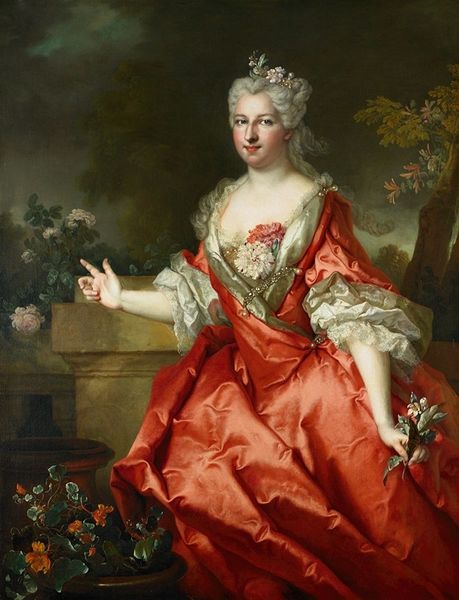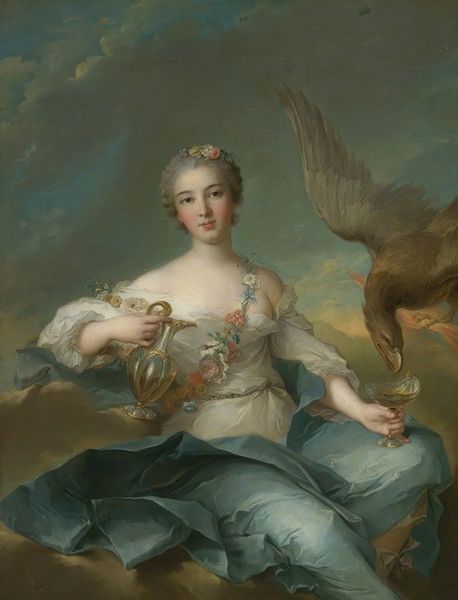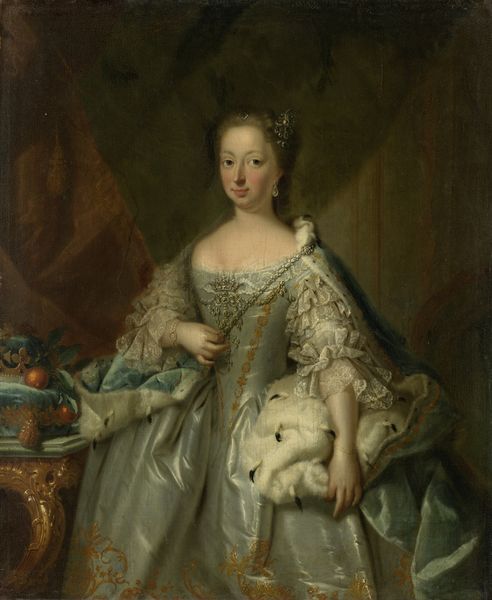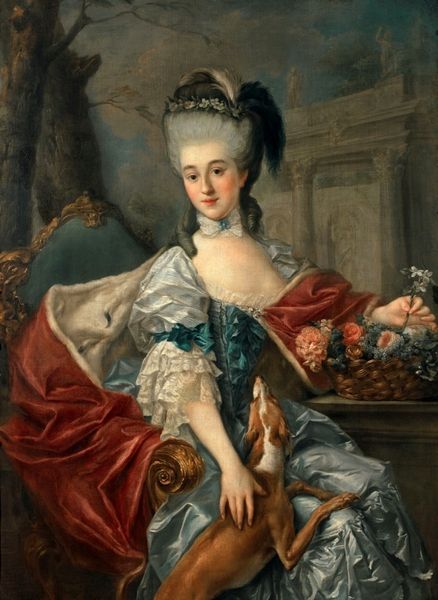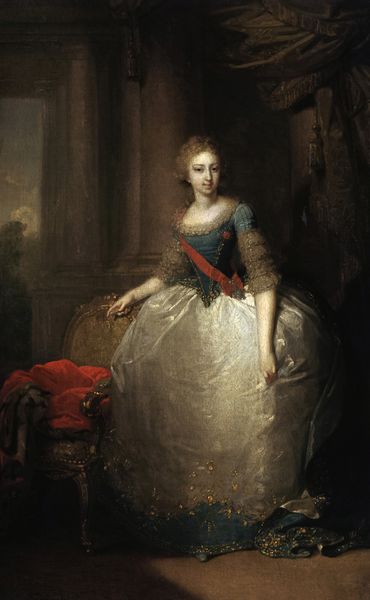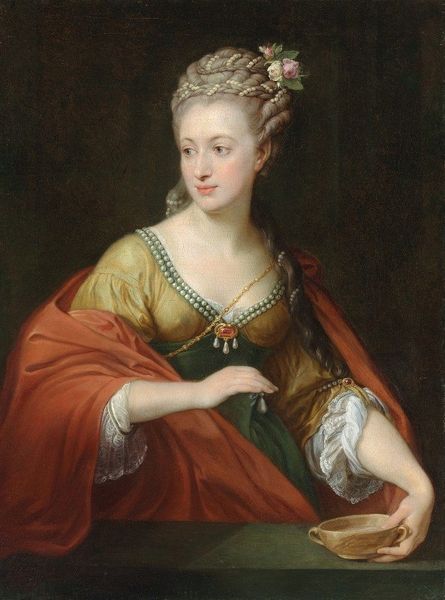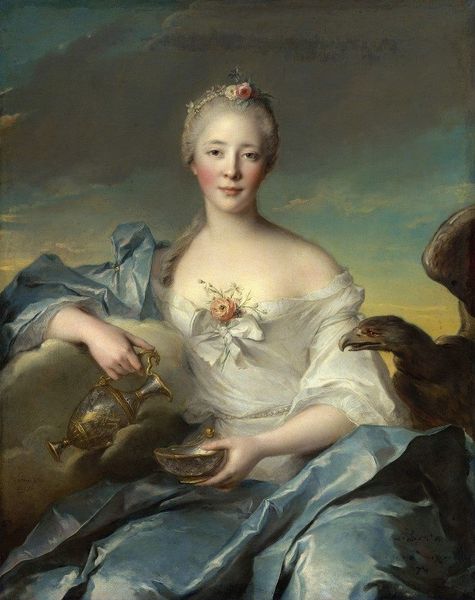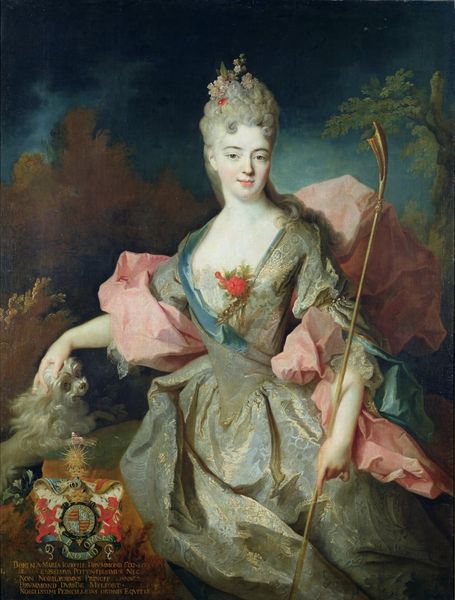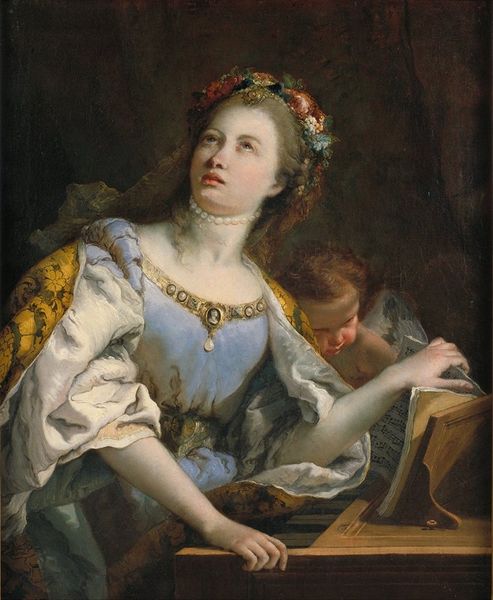
painting, oil-paint
#
figurative
#
baroque
#
painting
#
oil-paint
#
genre-painting
#
history-painting
Copyright: Public Domain: Artvee
Curator: This painting is identified as Nicolas de Largillière's, “Portrait of a Woman” executed in 1696 with oil paint. Editor: There’s a serene, almost ethereal quality to her presence. The soft hues create a gentle mood, although something about it unsettles me. Curator: As an iconographer, what details do you immediately notice? Editor: The composition places the sitter against a backdrop hinting at classical sculpture and manicured gardens. Then you have the figures – a pet parrot on a ledge and what appears to be a Black servant in the shadows. The juxtaposition immediately creates a cascade of semiotic meanings and narratives. Curator: Indeed. The symbolism woven in here, a fashionable woman depicted in her finery. It speaks to the aristocratic milieu and to the growing culture around luxury, even exotification, within late 17th-century French society. How does Largillière use these tropes? Editor: Well, on one hand it cements her status through these familiar cultural shorthand for wealth and sophistication. However, there are undercurrents suggesting deeper tensions – is she complicit in exploitation or is this a statement on her personal empowerment within it? It would depend, ultimately, on her self-awareness and position of power within the work. Curator: The portrayal reflects how these subjects were perceived through history. Would you say there's an intended meaning versus our modern reading? Editor: Undoubtedly, the power dynamic reflected might have seemed commonplace at the time, almost invisible. But today, seeing the human alongside the exotic pet and person reduced to attendant speaks volumes about the structural inequalities embedded in that era’s culture and imagination. Curator: So, we must acknowledge its historical context. Yet still examine with a modern critical view. It encourages important dialogues to question not just aesthetic pleasure but social responsibility of image-making. Editor: Exactly. We interpret history and hopefully, inform a more equitable vision of representation in the future. This “Portrait” reminds us visual representation wields tremendous power.
Comments
No comments
Be the first to comment and join the conversation on the ultimate creative platform.
